
Why has
AC become
the leading
cooling
solution?
Air-conditioning
The global average temperature has increased by approximately 1.1 degrees Celsius since modern recordkeeping began in 1880, and the past nine years have been the warmest years on record. The Intergovernmental Panel on Climate Change reports that global surface temperature will continue to increase until at least year 2050. A draconian reduction in heat-trapping greenhouse gas emissions is therefore needed in order to avoid temperatures reaching unadaptable or even lethal levels in certain areas. While our world is already heavily dependent on energy, in the next few decades, large parts of society will continue to adapt to rising temperatures by increasing the demand for cooling energy. Without drastic improvements in energy efficiency and in the use of low-carbon energy sources, the additional energy demand driven by space conditioning will make the efforts to reduce greenhouse gas emissions more difficult and costly.
Since the end of the last century, the use of AC has established itself as the technological solution to combat uncomfortable temperatures. But if we look at the prevalence of AC across countries, we immediately see that it only imperfectly reflects climatic conditions. Why do we see much higher prevalence rates in the United States (U.S.) as opposed to countries in the Global South? In a paper dated 2021, Mazzone and Khosla ask to what extent AC adoption and use is informed by our physiology and to what extent, instead, is it socially constructed? The question is rather complex, as temperature and heat perception, the notion of thermal comfort, and therefore the use of AC relate to dynamics that are all deeply entrenched in culture and society.
Not only has AC triumphed as the predominant cooling strategy, but it has also displaced a myriad of other cooling and building practices based on principles that have widely been used throughout history, especially in hot countries. These principles include shading, building orientation, evaporative and passive cooling. Nevertheless, “AC [...] changed the nature of civilization by making development possible in the tropics. Without air-conditioning you can work only in the cool early-morning hours or at dusk", said Singapore's prime minister Lee Kuan Yew, the man who transformed an island with few natural resources into one of the wealthiest nations in the world. At the rate AC systems are being installed, this cooling solution bears the risk of causing another global crisis.

77% 28°C
A building in the center of Mumbai displays an individual AC unit for each room. These facades of ACs are a common sight in the city centers of tropical countries. India, 2019
Number of very hot days per year today and in 2050
These maps show the number of days per year with a heat index above 32 degrees Celsius. The heat index measures what the temperature feels like to the human body when relative humidity is combined with air temperature. For example, when the temperature is 32 degrees Celsius with 70% relative humidity, the heat index is 41 degrees Celsius.



The recent summer heatwaves in Europe (2003, 2006, 2018, 2019, 2022, 2023) and in India (2015, 2018, 2019, 2022,2023) remind us how dangerous high temperatures can be.
Exposure of the human body to a combination of extreme temperatures and humidity can have severe effects on human health. Heat stress is expected to approach critical thresholds not only in tropical humid countries, but also in certain places in Europe and North America, especially for outdoor workers and vulnerable households with elderly, infants, or adults with health conditions. At the global level, a recent study estimated 490,000 heat-related excess deaths each year, with about 50% occurring in Asia, followed by Europe with 36%. On top of these figures, the World Health Organization has projected an additional 94,000 deaths due to heat in 2030, with almost 40% located in Asia and high income countries.
Malcolm Mistry, researcher in climate modeling, explains that, during the heatwave of 2003, Italy experienced an average daily heat index between 20 and 35 degrees Celsius. These episodes of heatwaves in Europe give a sense of how dangerous a heat index exceeding 32 degrees Celsius can be for less acclimatized countries. In Italy today, we can count an average of 3 days per year exceeding this threshold of 32 degrees Celsius, as shown in the maps on page 16-17. Other regions that have experienced conditions of extreme discomfort in Europe are Spain and Greece, with 2 and 6 days per year above this threshold. These figures increase by one or two orders of magnitude when moving to Brazil, Indonesia, and India, reaching, respectively, 41, 124, and 125 days per year.
Looking ahead at 2050, climate change is projected to increase the frequency, intensity, and duration of humid heat extremes across all countries, and the number of days with a heat index above 32 degrees Celsius will become more common (+18% in India, +20% in Italy, +58% in Brazil, +72% in Indonesia).
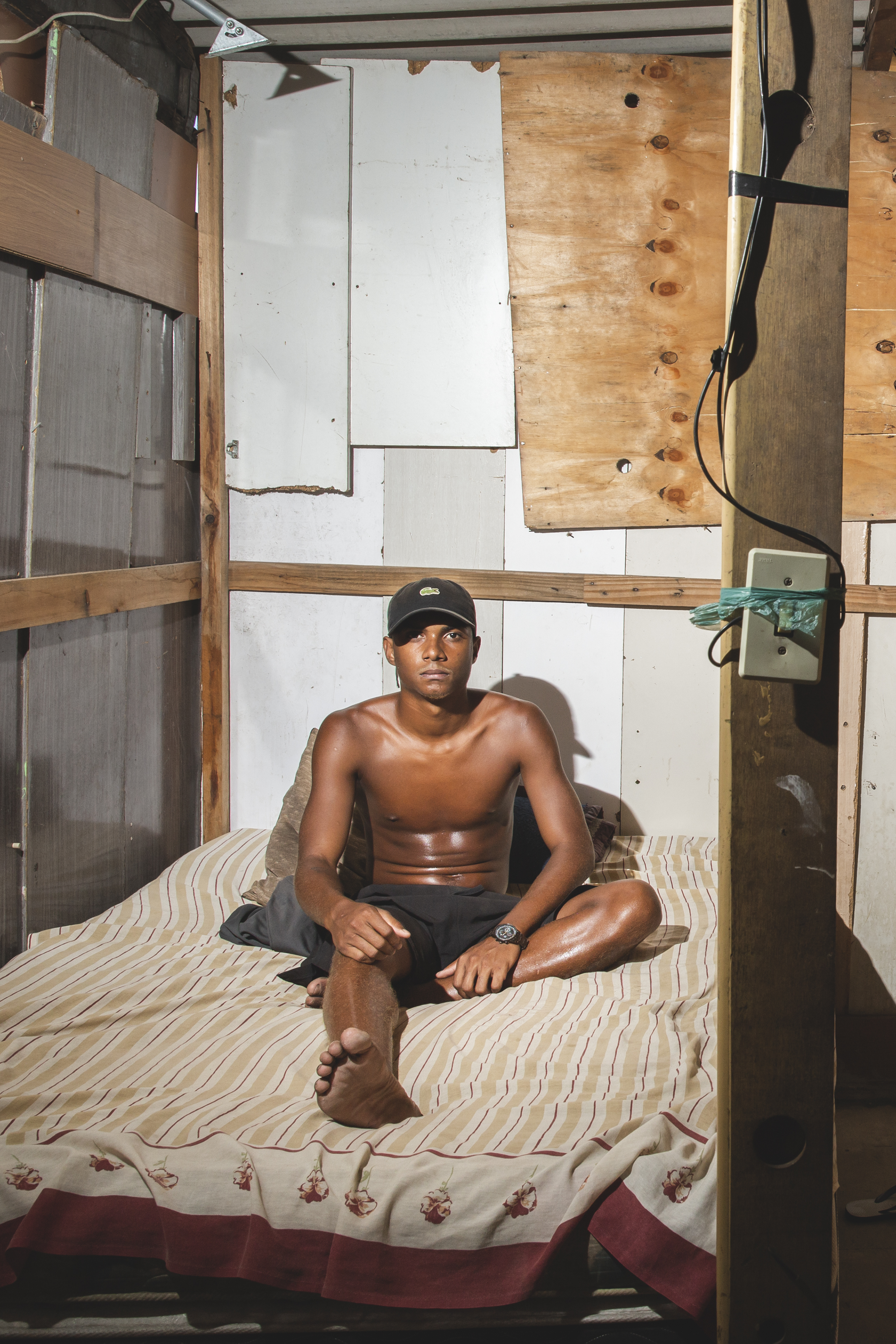
56% 30°C
Anderson Cleyton, 23, sits in his wooden house, with no windows, in Ocupação Dandara, a temporary illegal settlement in the suburbs of Rio de Janeiro. Brazil, 2022
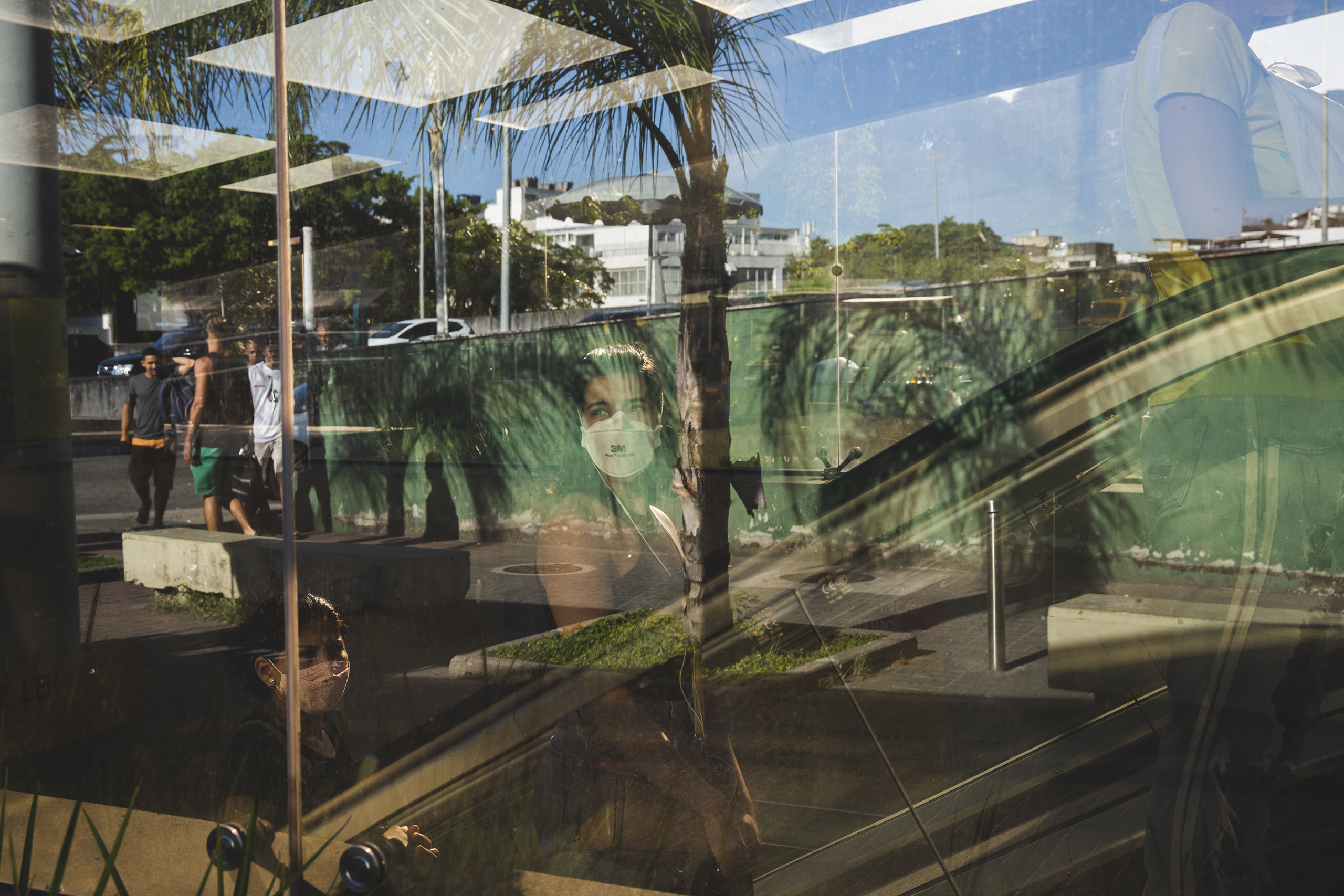
61% 31°C
Commuters exit the subway at Barra da Tijuca, a fast-expanding upper-middle-class neighborhood in the western area of Rio de Janeiro. Brazil, 2022
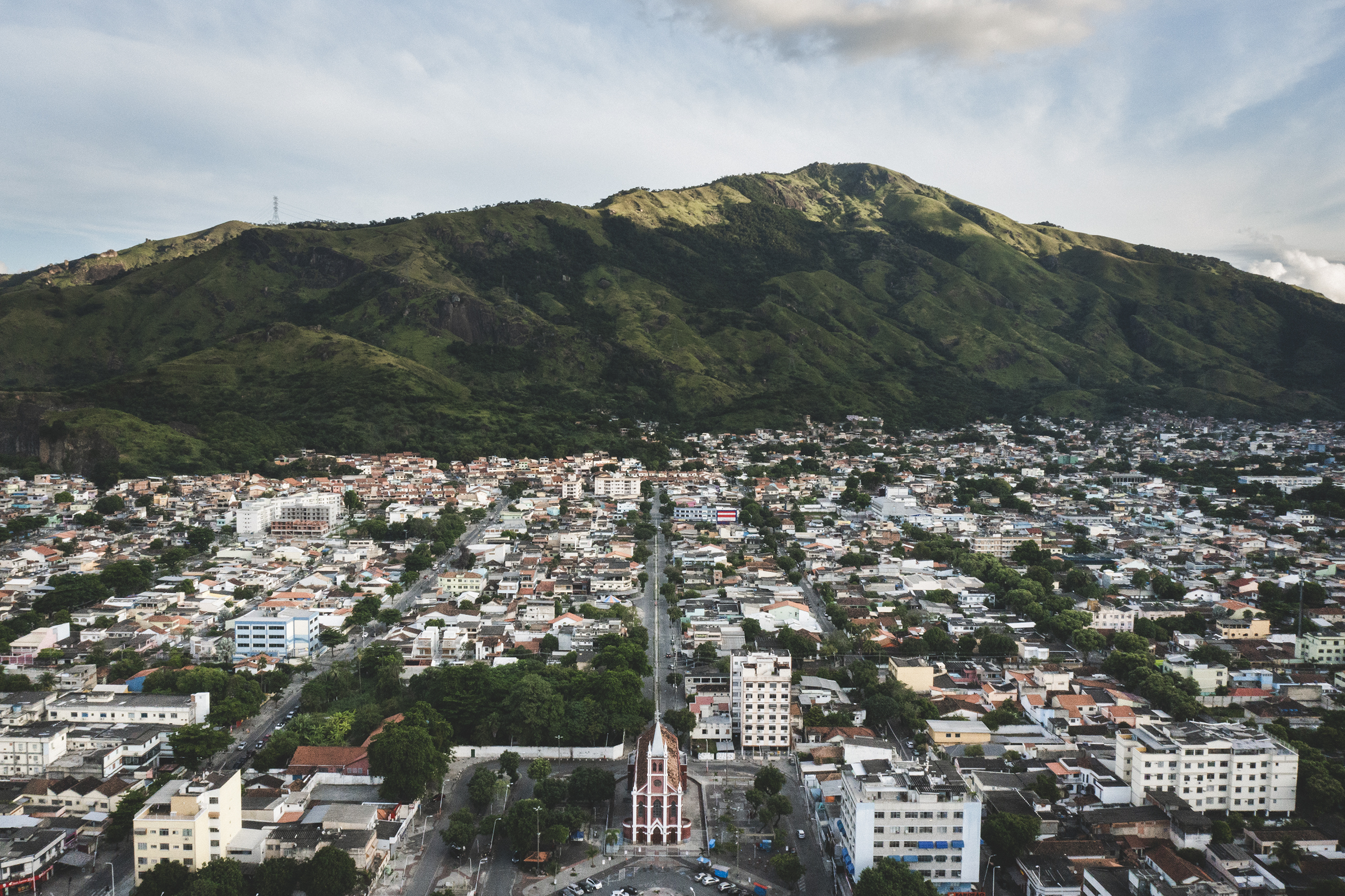
75% 26°C
Bangu is the hottest area in Rio de Janeiro. The massif of Pedra Branca, seen in the back, prevents sea breeze from reaching the area, and separates it from Barra da Tijuca. Brazil, 2022
Thermal comfort depends on social, economic, psychological and cultural factors, including the value attached to the status symbol of possessing certain types of appliances.
What is of concern is not just rising temperatures, but their combination with humidity levels. Humans adapt to high temperatures by dissipating heat through perspiration. If the surrounding environment is not able to absorb heat, because of several factors including high humidity, the ability to reduce body temperature is impaired, and a person starts to feel hot.
“The range of temperature and humidity conditions at which we feel comfortable is much narrower than the range to which humans can adapt", reports Avika Somvanshi, urbanist. Moreover, the definition of thermal comfort zones is widely subjective and vary across geographies and activities people are engaging in. Despite the commonly accepted definition of thermal comfort, which implies the existence of objective ideal conditions, the concept is far more complex and also depends on the subjective experience of external stimuli as mediated by body, culture, and society.
These factors contribute to influencing users' expectations, which in turn determines the concept of thermal comfort. Users' expectations and preferences are influenced by historical, socio-cultural and contextual boundaries, including a range of multiple variables directly impacting human experience, such as physiology, the living physical environment such as architecture, geometry and morphology of external spaces, as well as the cultural environment, such as education and values.
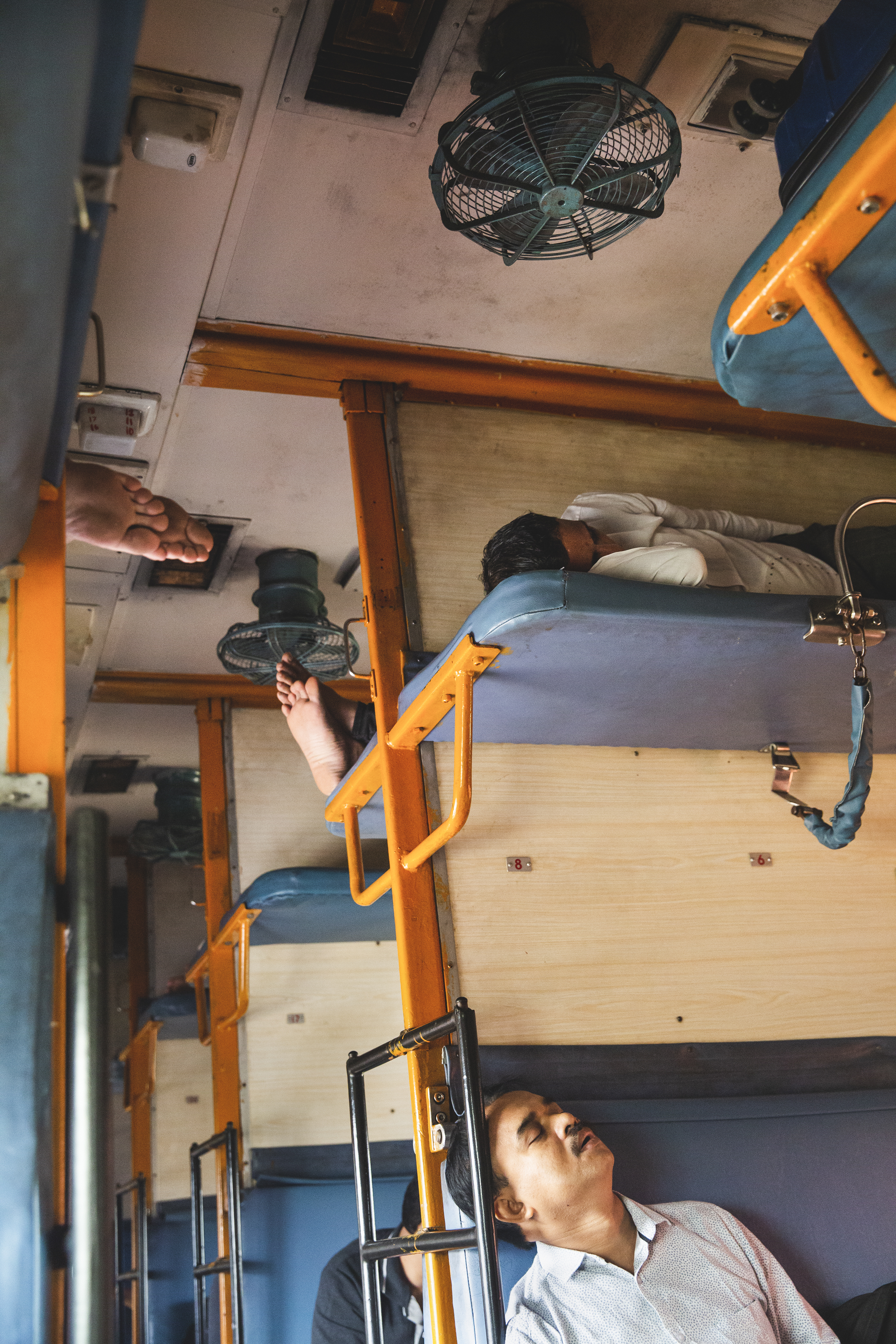
44% 28°C
Passengers sleep in the second class car of a train headed to Jaipur. Even more than air temperature, it is humidity that determines the perception of heat. India, 2019

62% 22°C
An elderly man stands on the balcony of a residential building in Bolzano, in the shadow of trees that protect him from the direct summer sun. Italy, 2022
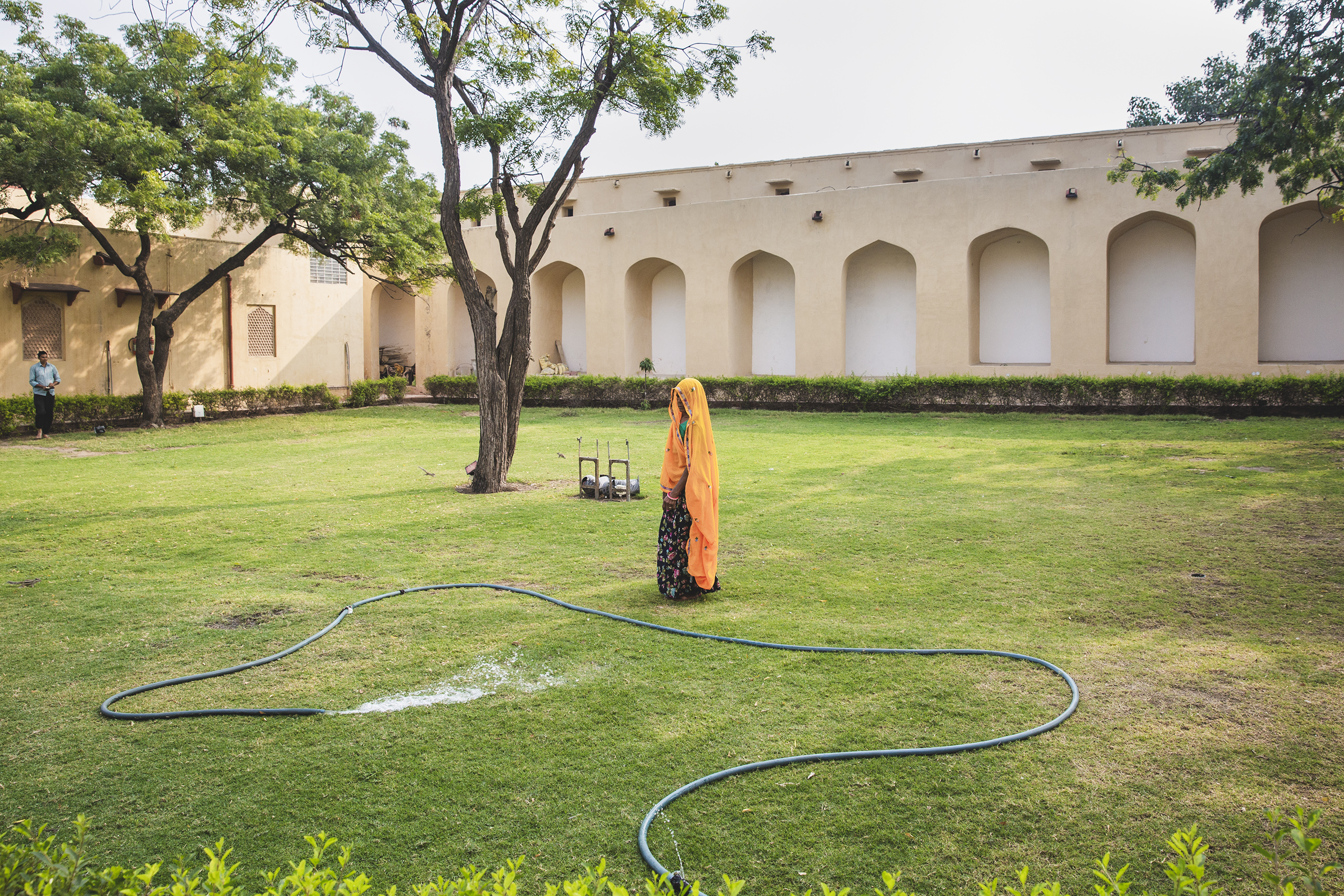
55% 24°C
A worker waters the grass at the Jantar Mantar in Jaipur, a park displaying a collection of 19 astronomical instruments from the 18th century. India, 2019
When humidity is very high, even a temperature of 32°C can lead to strong heat stress, while 35°C can trigger lethal consequences.
Comfort zone and stress temperatures according to relative humidity
The different heat stress zones depicted in the figure are based on physiological parameters but will vary according to demographics, social, cultural and health characteristics of individuals.

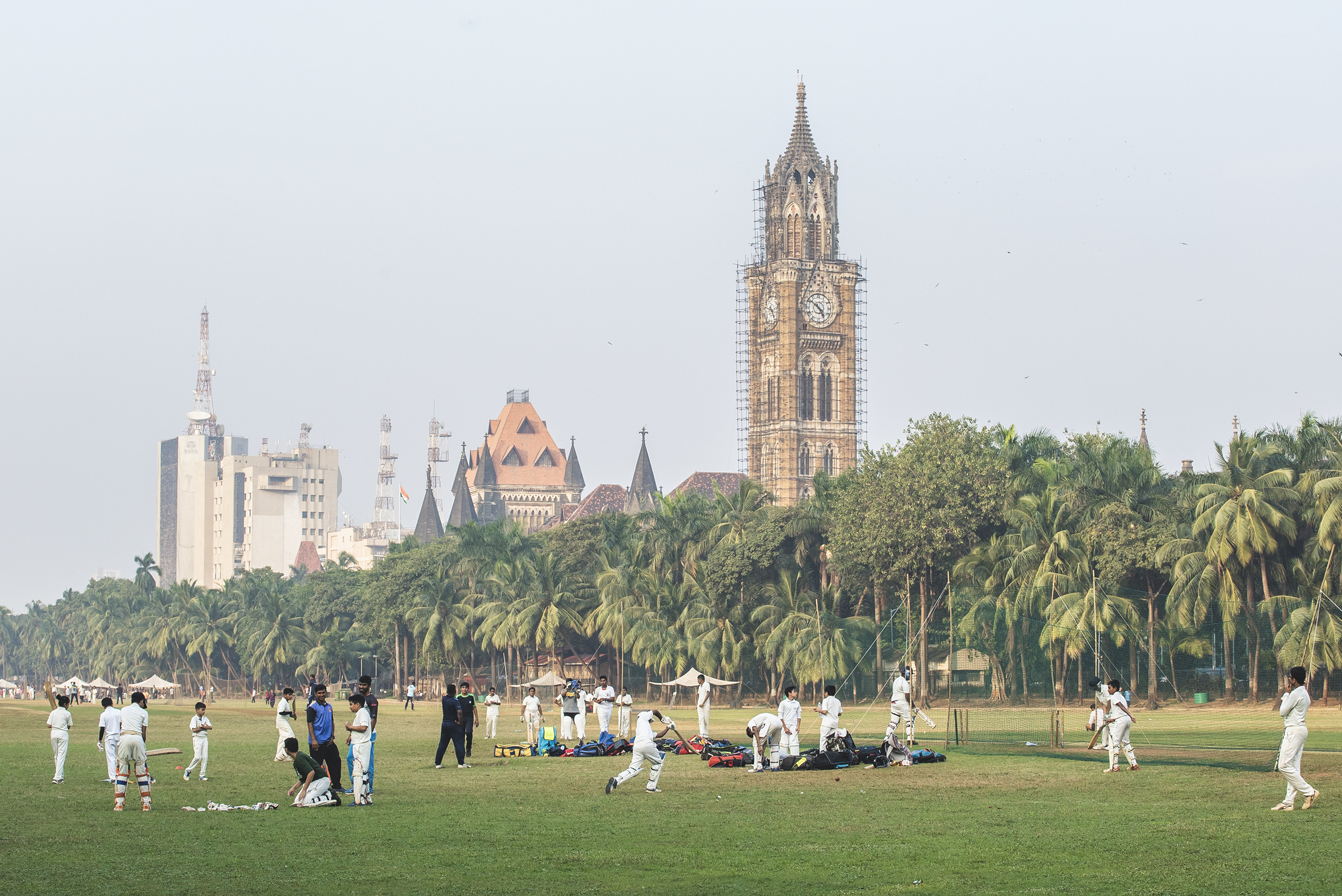
Expectations about thermal comfort are influenced by an individual’s historical, social and cultural background.
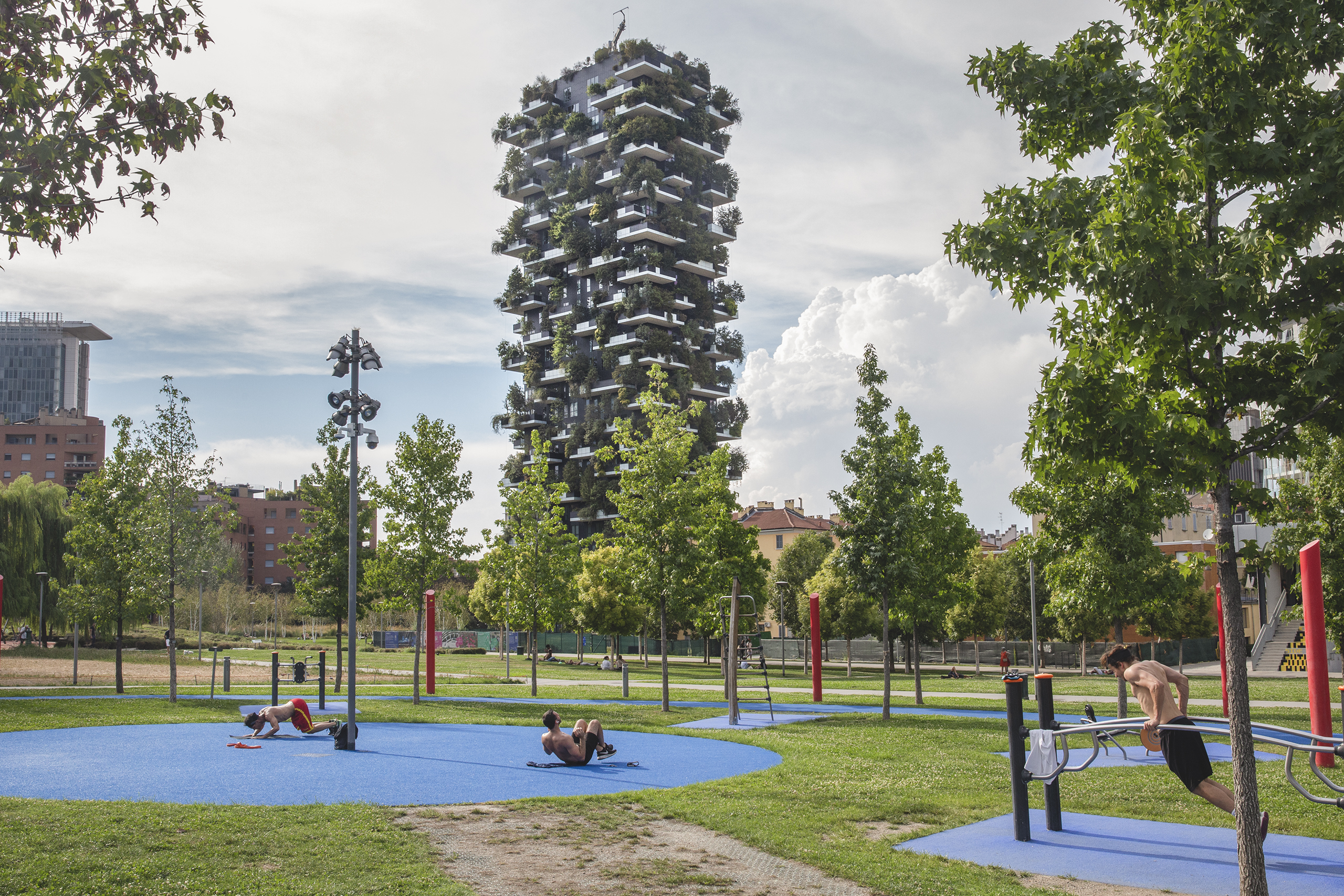
38% 35°C
Young men work out at a public park in front of the Bosco Verticale Milan, Italy. The blue surface they train on measures a temperature of 43°C under the summer sun. Milano, 2022
Expectations about thermal comfort are influenced by an individual’s historical, social and cultural background.
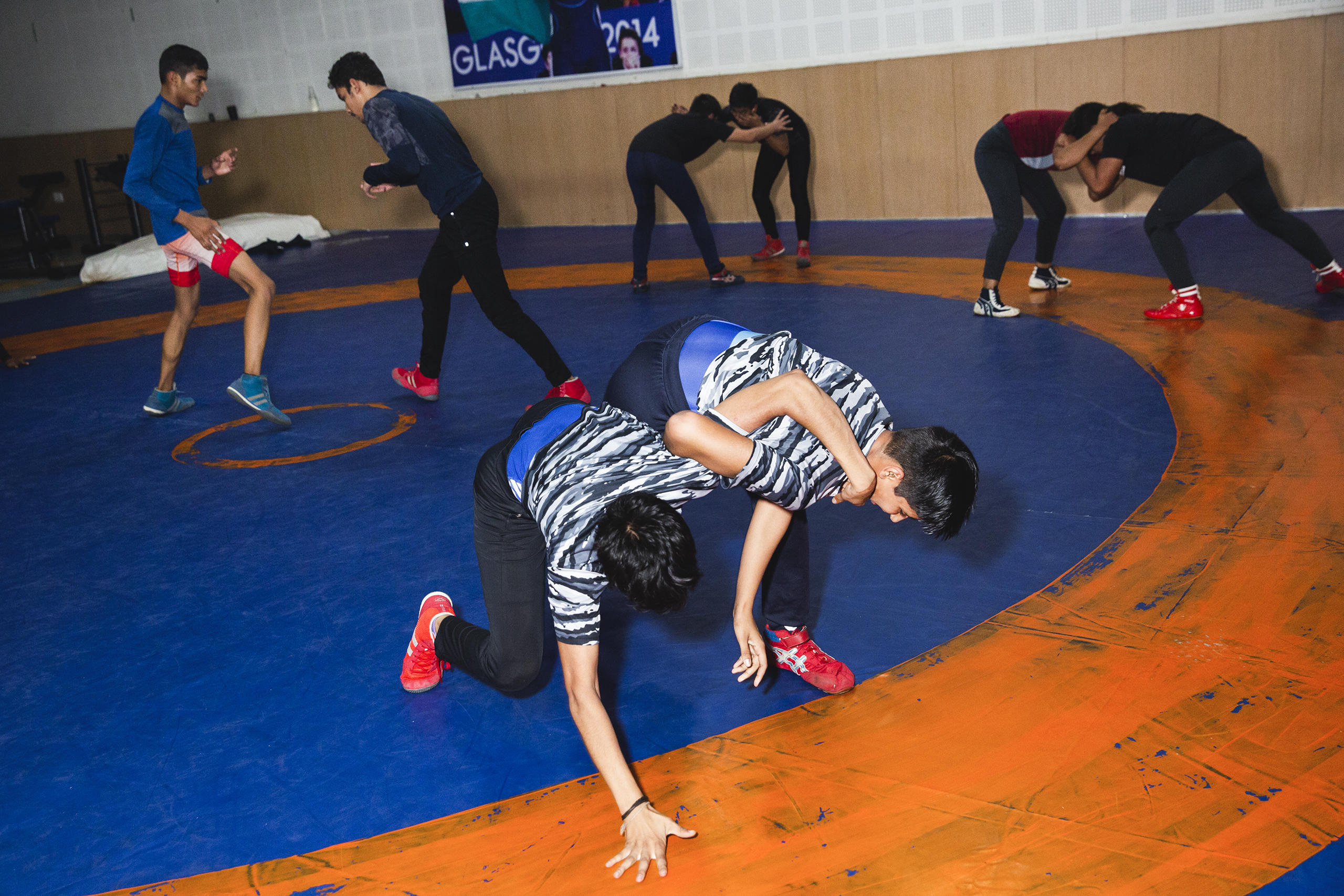
54% 25°C
The Wrestling Hall at Sir Chhotu Ram Stadium, in Rohtak, trains female wrestlers from all over India, many of them coming from rural areas where their role in society is traditionally limited. India, 2019.

70% 22°C
Jarina, 26, a female wrestler, rests after training at Sir Chhotu Ram Stadium, whose cooling system relies on fans, in Rohtak. India, 2019
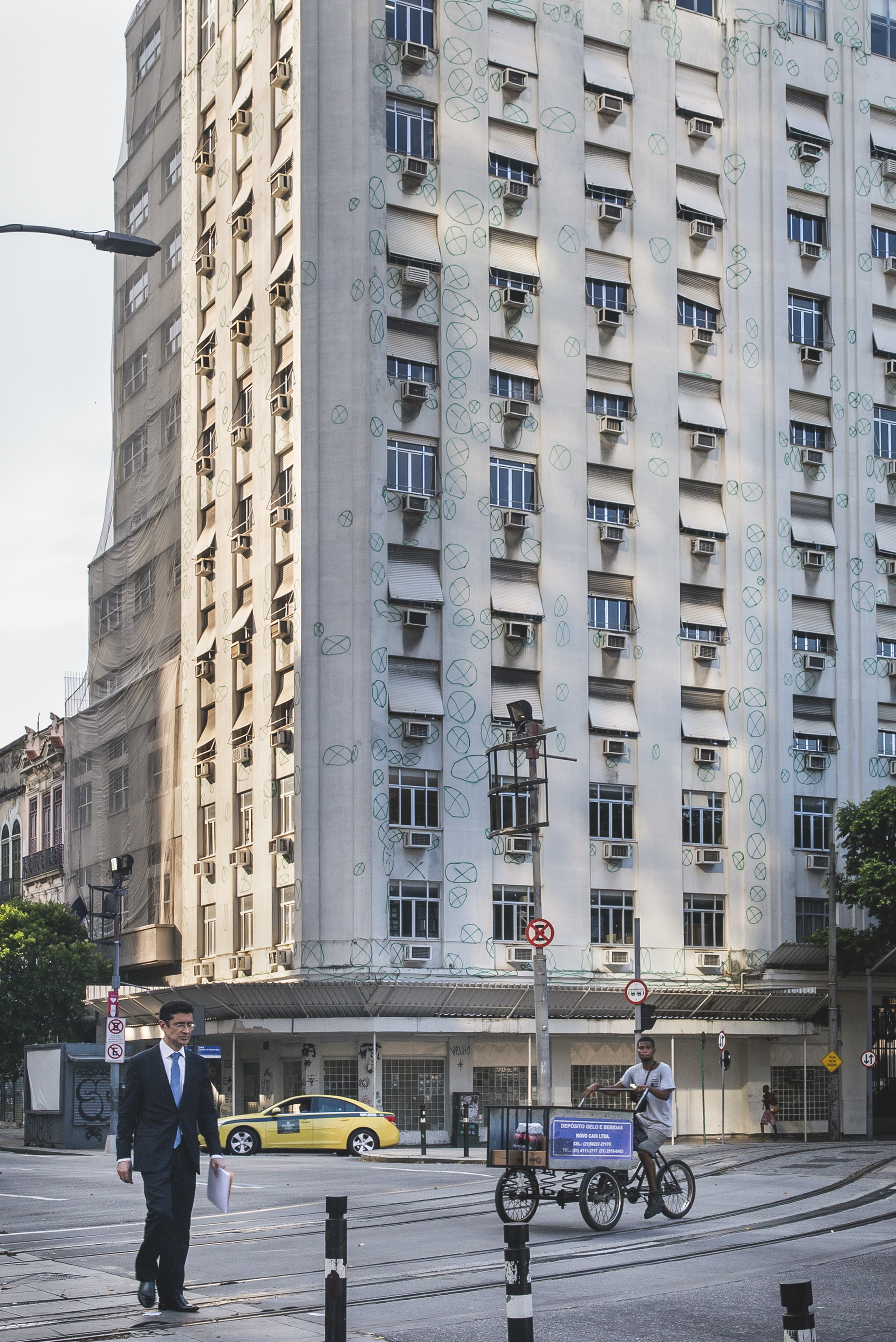
76% 28°C
A businessman and a street seller cross paths in the center of Rio de Janeiro. The individual AC units on the building in the background are a common sight in the city center. Brazil, 2022

55% 20°C
People gather around a street food seller in Old Delhi. Street workers in warm developing countries are constantly exposed to heat, lacking any form of cooling system. India, 2019
TerraXCube
TerraXcube is Eurac Research’s extreme climate simulation center at the NOI Techpark in Bolzano, South Tyrol. Within the chambers of the TerraXcube, researchers can create all the environmental conditions of our planet, including extreme ones. They combine hypobaric and altitude technology with state-of-the-art environmental simulation, aiming to investigate the effects of extreme climate conditions on humans, ecological processes and industrial products. The climate chambers differ in size and equipment. They can accommodate people, plants, and other living organisms even over extended periods and offer space for huge machines and products to test their limits in extreme conditions. These climate chambers are being used in 2023 for grounded cognition experiments to test how humans make sense of the air temperature they are immersed in. Grounded cognition is a psychological theory that studies cognition in conjunction with the body and the environment. According to this theory, the mind is influenced, and in turn influences, the body system and the perception of the environment.
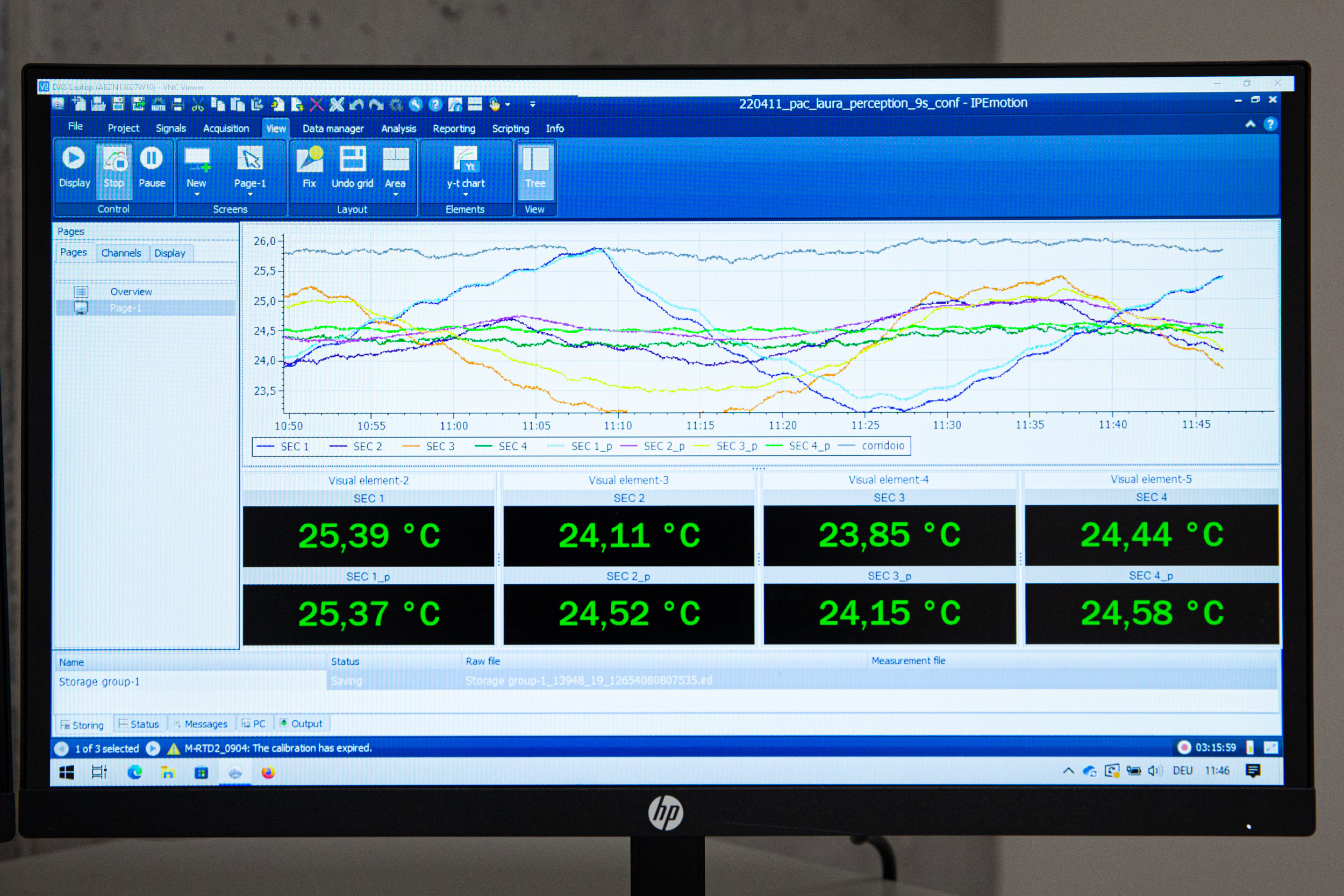
Temperature profiles of the 4 climate chambers are monitored during an experiment on temperature perception at terraXcube, Bolzano. Italy, 2022
Participants were able to perceive temperature differences as low as 0.6°C.
To test the theory, researchers began by simplifying our reality and focusing solely on how our bodies respond to temperature. As they progressed, they began to explore the intricate complexities of how our environment influences perception, including its diverse multisensory stimuli. In the first experiment, the participant was asked to move randomly from one chamber to another and to report whether the second chamber was warmer or colder. The very first results of these experiments indicate that participants were able to spot differences of temperature as little as 0.6 degrees Celsius. The second experiment entailed introducing the visual realm by changing the color of the chamber lights. As humans, we have an instinctive tendency to merge all available information in an environment without being able to process each stimulus independently. Preliminary results suggest that visual stimuli have an impact on our thermal perception, with red lights creating the illusion of a warm environment and blue lights leading to the perception of a cold environment.
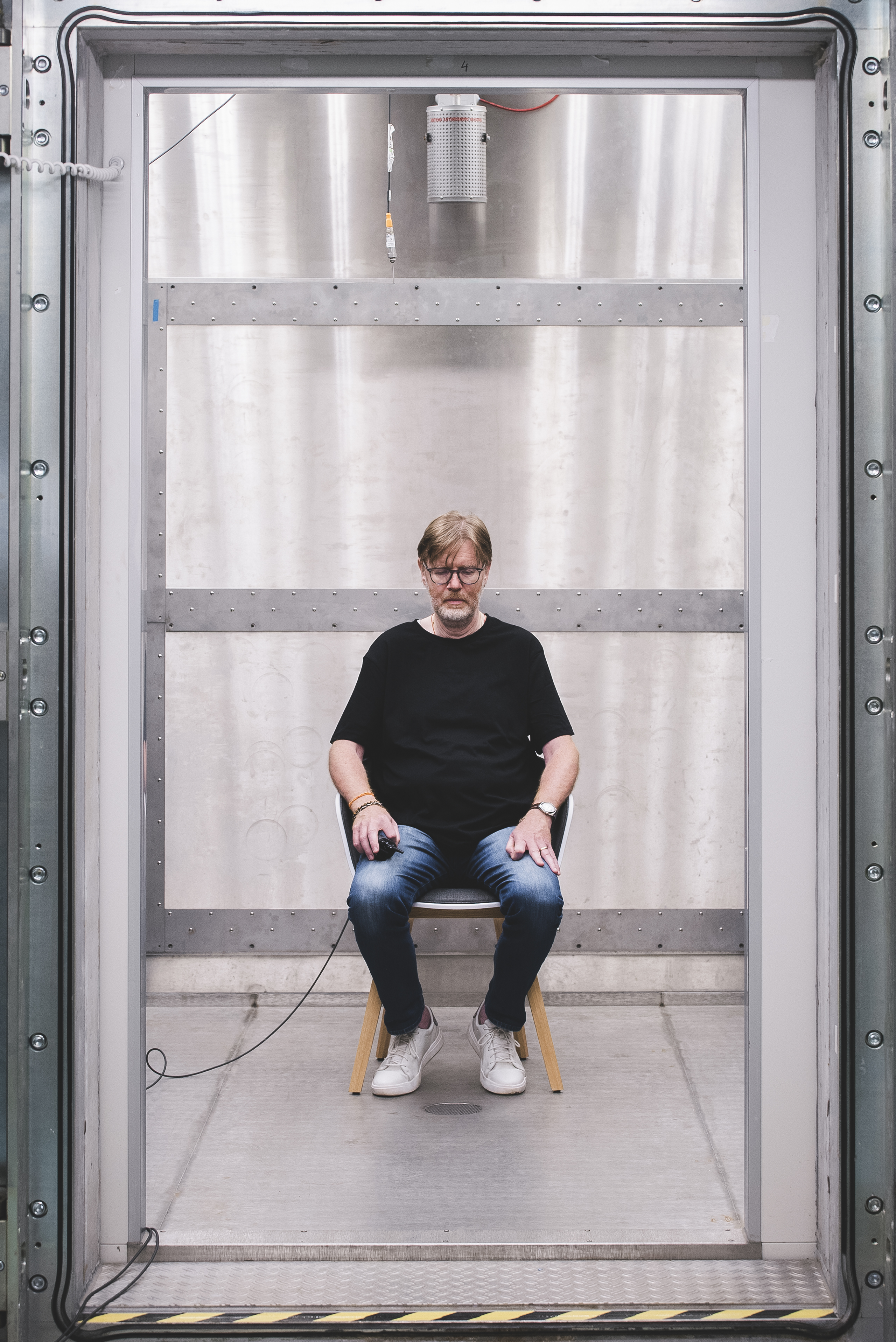
Günther Cologna, 64, tries to focus and perceive minimal temperature variations during an experiment on thermal comfort in one of terraXcube's chambers in Bolzano. Italy, 2022

A view of the main chamber at terraXcube where researchers can create all the environmental conditions of our planet, up to extreme values. Italy, 2022
Mauro Neme was born in Rio de Janeiro and is of Palestinian descent. Three years ago, he established a cultural association for kids in a favela located in the neighborhood of Santa Teresa. This small place hosts computers, a library, and even a mini-movie theater, all dedicated to various activities for children, including literacy programs. “We take care of approximately 20 to 30 children per day, while the parents are working. We have little contributions to sustain us, but we can count on 10 volunteers who help us for our activities, which are mainly meant to keep kids out of trafico", says Mauro in reference to the drug smuggling business prevalent in certain favelas. “It would be an oven in here without AC and it would be impossible to stay inside without it, also because of all the computers we have, so the AC runs all day… and there is no electricity bill since I am connected to the network through a gato", the common illegal electrical connection that exists in many favelas. "Also, from next week we will have the pool back for the kids, which is essential to keep them fresh during hot days".
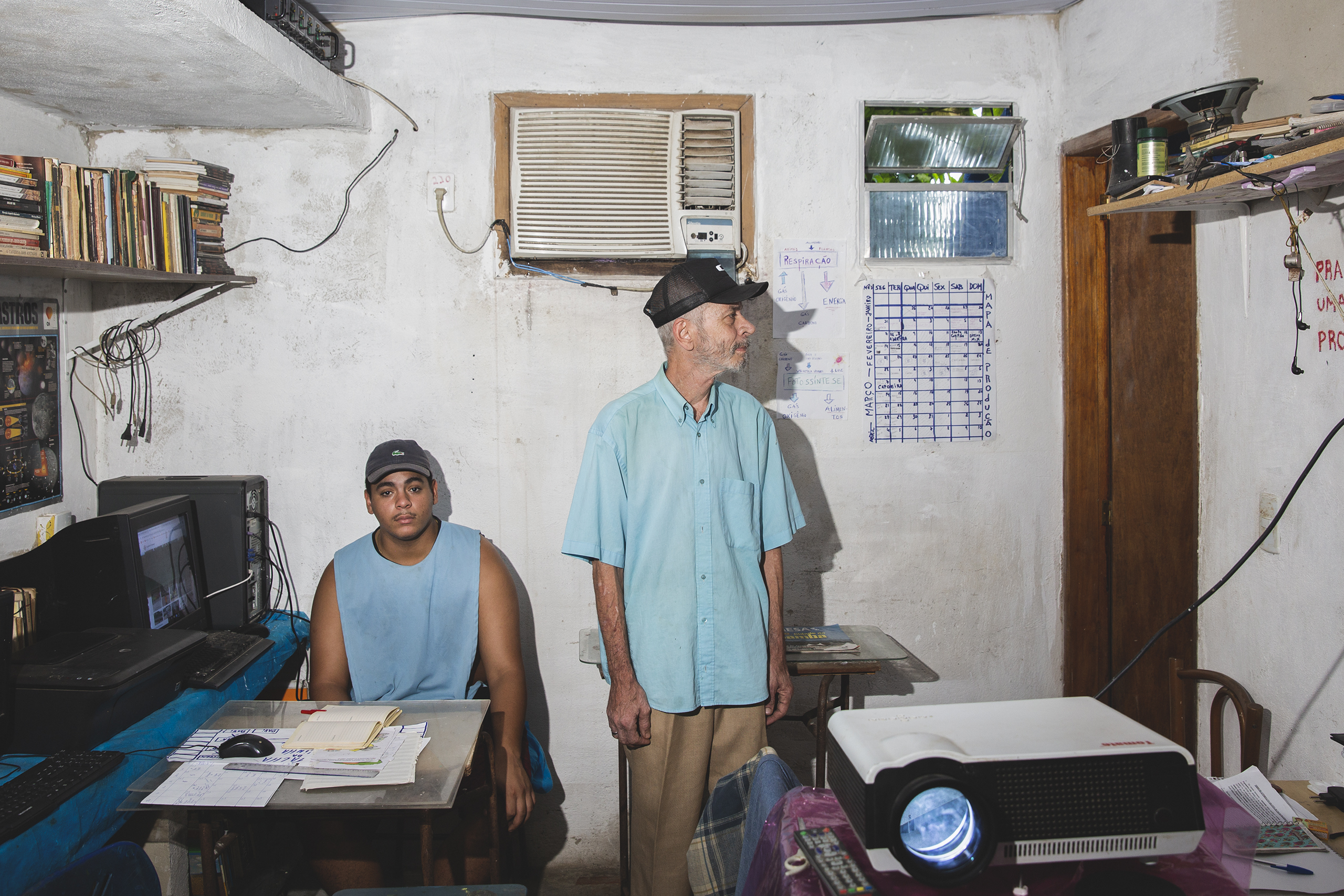
Mauro, Brazil
50% 32°C
Akos Barat, 37, a professional dancer from Hungary, stands in a deserted Milan city center in mid-August 2022. He has been living in Italy since 2006 and shares an apartment with his Israeli boyfriend, near via Vincenzo Monti in the city center. Akos suffers from heat during the summer in Milan, particularly at work where there is no AC. He recalls that in Budapest temperatures can drop to 17 degrees Celsius during the summer nights, and thinks “it’s absurd that nights in Milan can be at 29 degrees Celsius for weeks or more”. He does not like AC much at home and tries to keep cool by going for walks outside with his two dogs, or by heading to the pool. Unfortunately for him, his boyfriend grew up using AC all day in Israel, so at home the temperature is always set at 16 degrees Celsius “but as soon as he leaves, I simply switch it off and put on the dry modality”.

Akos,Italy
45% 32°C
AC vapor-compression cooling cycle
Since the introduction of the first self-contained electrical room AC in the early 1930s, the technology has not changed much and the vast majority of ACs sold today are still scarcely efficient.
Throughout human history, technology has played an important role in guiding the transition of human societies, facilitating the adaptation to new emerging conditions. Mechanical AC has certainly contributed to enhancing living conditions and to improving the working environments for workers, students, and teachers, especially in the tropics.
Mechanical AC has deeply transformed many aspects of our culture and society, including the definition and perception of thermal comfort itself. As Avikal Somvanshi, urbanist, claims: “someone living in the 18th century could have not imagined the kind of thermal comfort a person living in the century of mechanical space cooling can enjoy".
As Wilmer Pasut, professor of building science, explains, the vapor-compression cycle consists of 4 steps:
1) In a cooling cycle, energy goes to power the compressor that is used to increase the pressure, and so the temperature of the refrigerant in a vapour state.
2) The high-pressure refrigerant is now at a high temperature, higher than summer outdoor temperatures, and by going through a heat exchanger (condenser) condenses and releases heat outside.
3) The refrigerant in liquid state goes through an expansion valve, which drastically reduces its pressure and temperature.
4) The liquid is then colder than the indoor air temperature and, through the heat exchanger (evaporator), it can absorb the heat from the indoor space. The absorbed heat causes the evaporation of the liquid and the cycle starts again.

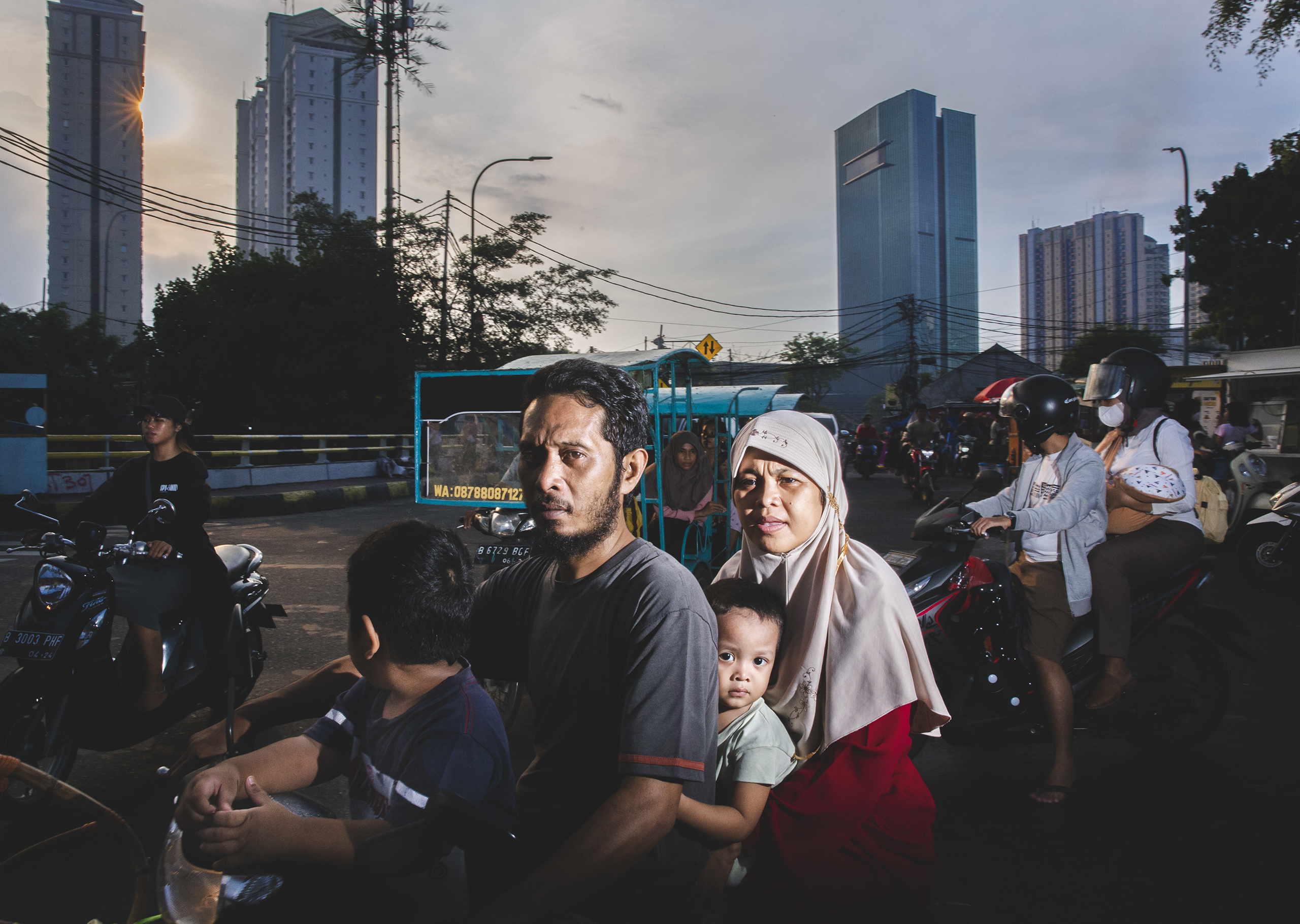
71% 28°C
A family rides a scooter in the Kemayoran neighborhood in the city center of Jakarta, with high-rise middle-class buildings in the background. Indonesia, 2022
Global homogenization of building practices has led to the proliferation of AC as the preferred choice to control ambient temperatures during hot seasons.
Over the last 50 years, AC has established itself as the most immediate, and most intensely advertized strategy to cope with extreme heat in different parts of the globe. From 1990 to 2016, global annual sales of ACs more than tripled to reach 135 million units worldwide, with the bulk coming from the residential sector alone. China led this cooling race with 41 million residential units sold, followed by 16 million in the United States, and roughly 9 million in both Japan and Europe.
The prevalence of AC across countries only imperfectly reflects the diversity in climatic conditions. The United States and Japan lead with more than 90% of households equipped with AC. Cultural and climatic reasons have kept AC adoption low in Europe, and Europeans have been historically less inclined to install AC units as a cooling solution. In Mediterranean countries like Spain and Italy, less than half of households have an AC installed at home. Yet, this is now changing rapidly as urbanization and rising average temperatures will increase demand in these countries as well. The reduction in AC cost, along with policy incentives, will contribute to increasing the demand for AC.
In tropical countries, the adoption and actual use of ACs by households is essentially constrained by income. But the forecasted rise in the average economic conditions of hot tropical countries such as India, Indonesia, and Brazil, is expected to set the AC uptake on a doubling trend in the next couple of decades.
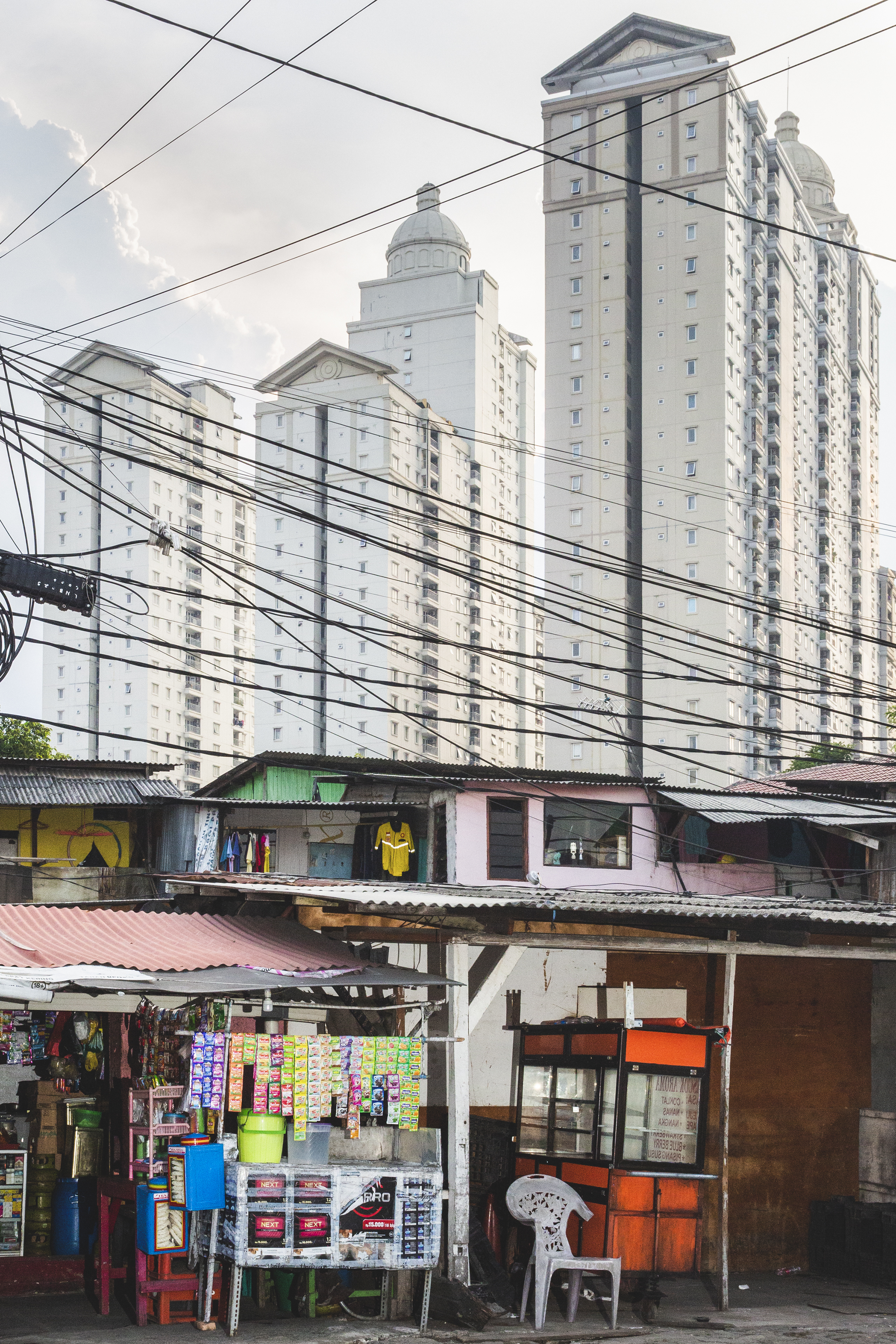
71% 28°C
Residential buildings tower above market huts in the Kemayoran neighborhood of Jakarta. Urban development in warm developing countries is leading the boom of AC demand. Indonesia, 2022
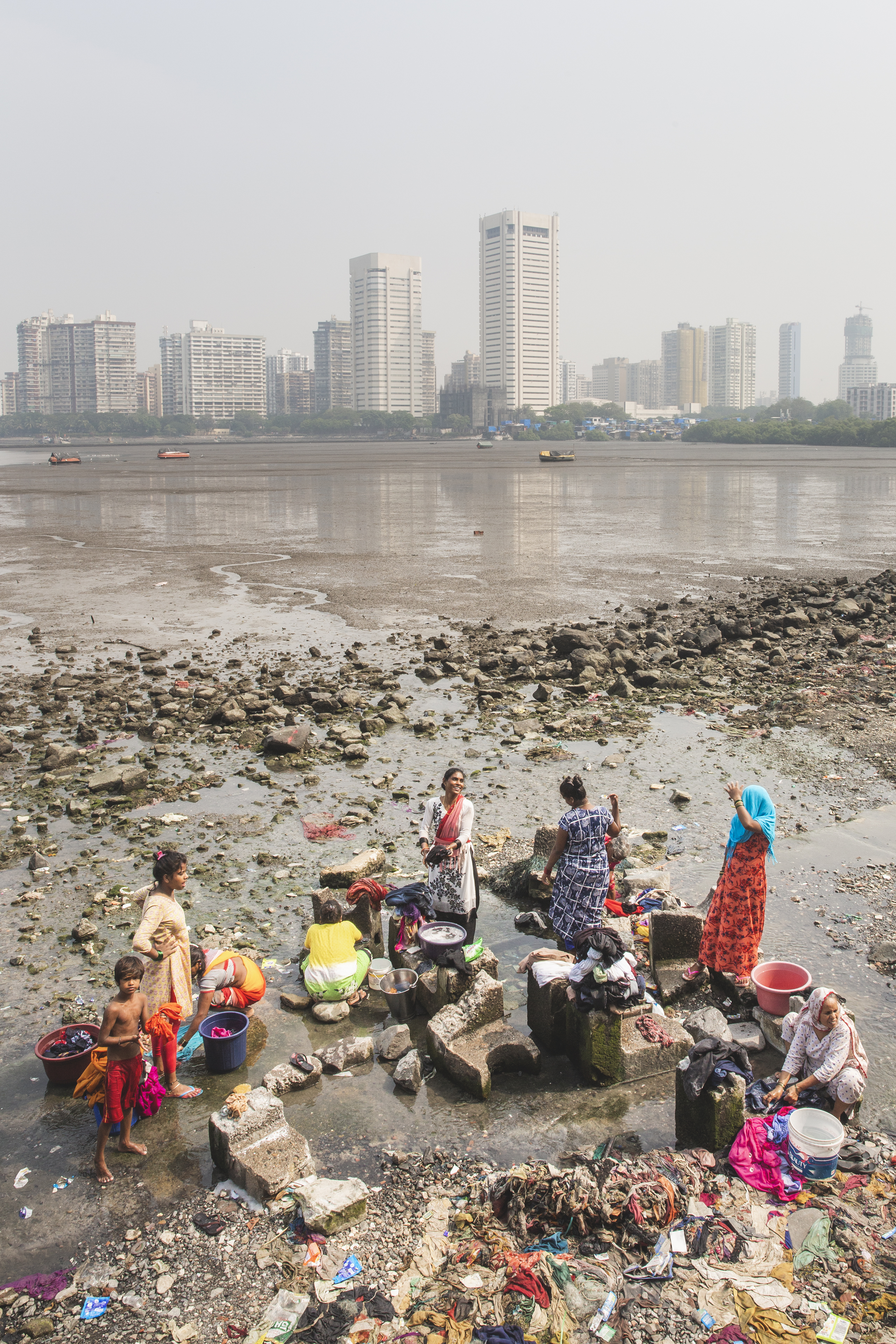
60% 30°C
Women wash clothes in seawater at the fishermen's village of Worli, overlooking residential buildings in Mahim, a wealthier area in Mumbai. India, 2019
Within the next 30 years, the poorest households of populous tropical countries will expand into a large middle class which will acquire billions of ACs for heat relief.
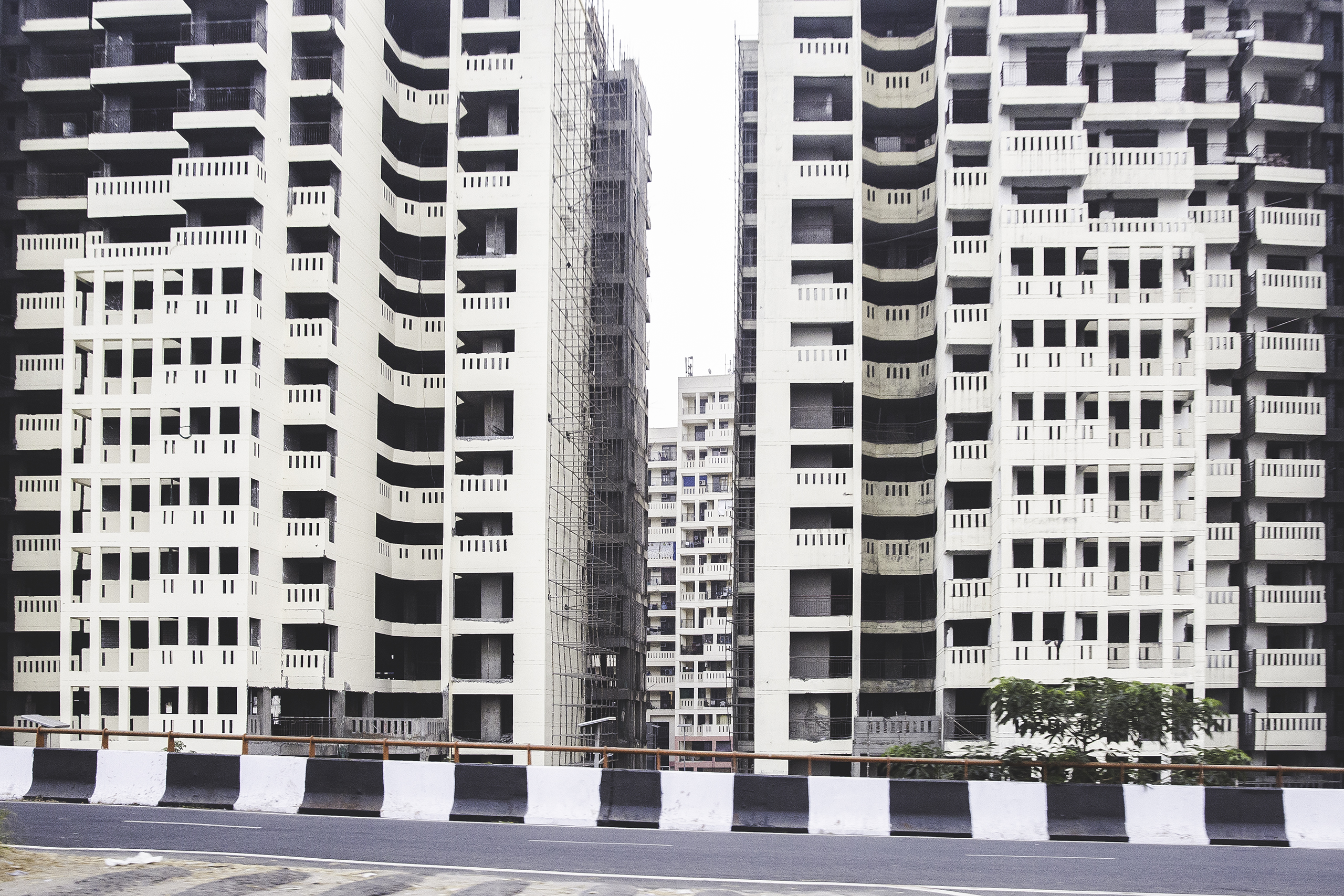
76% 20°C
High-rise buildings surge on the outskirts of the fast-expanding technology hub of Gurgaon, known for having one the worst air quality indexes on the planet. India, 2019
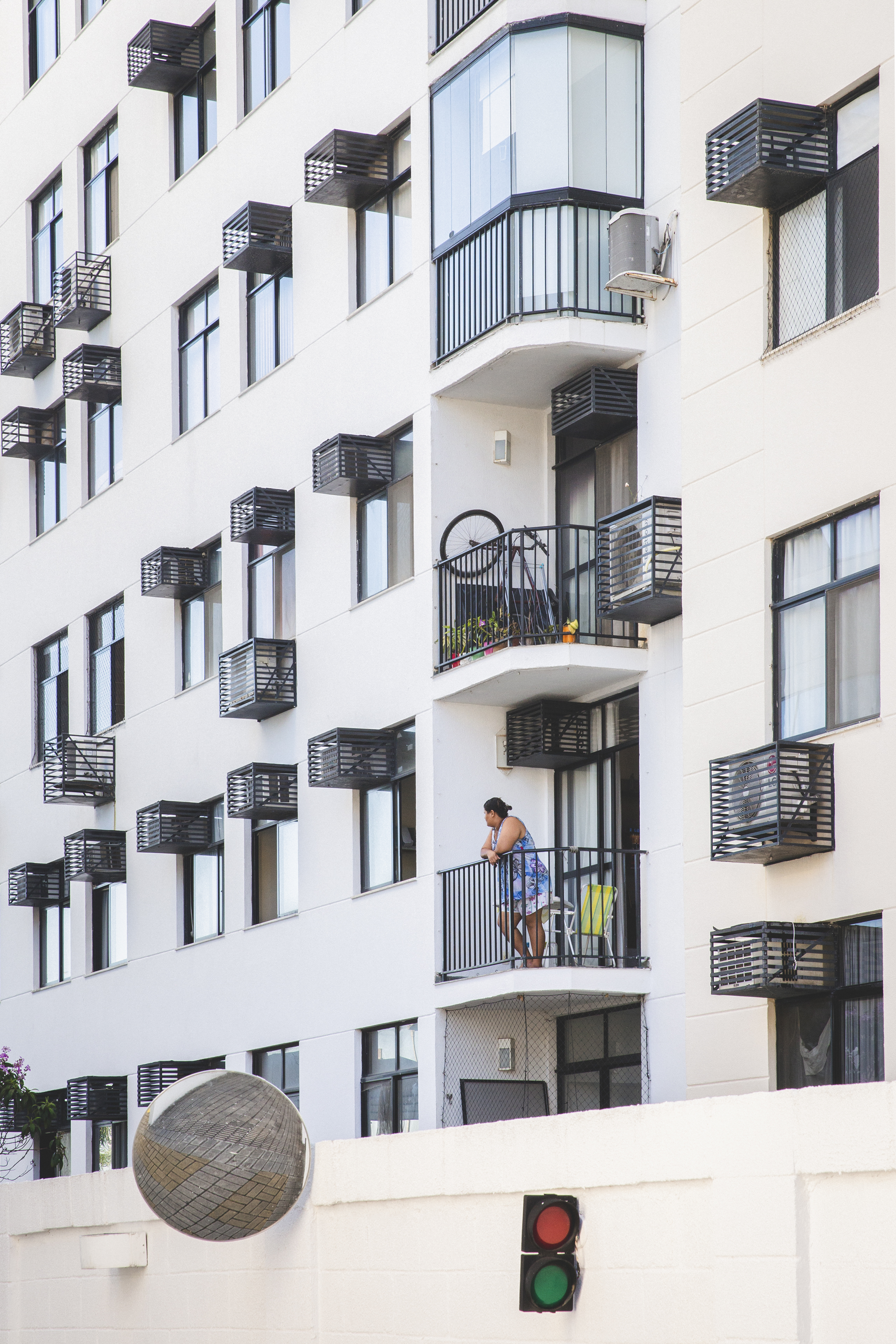
66% 30°C
A woman stands on her balcony in a building with individual AC units, in the residential neighborhood of Barra da Tijuca, west of Rio de Janeiro. Brazil, 2022
AC adoption in households today and in 2050
Historically, the United States, Japan, and Australia lead the race in AC adoption, but it is 3 of the world's most populous countries - China, India, and Indonesia - that will experience the largest increases by 2050.
- Today
- 2050
U.S.A.
- 94%
- +2%
Japan
- 91%
- +4%
Australia
- 75%
- +13%
Spain
- 54%
- +13%
Canada
- 48%
- +26%
Argentina
- 42%
- +33%
Italy
- 39%
- +28%
China
- 35%
- +40%
Brazil
- 21%
- +20%
India
- 17%
- +38%
France
- 17%
- +38%
Netherlands
- 11%
- +14%
Nigeria
- 3%
- +16%
Pakistan
- 8%
- +20%
Niger
- 8%
- +34%
Indonesia
- 5%
- +32%
Sweden
- 5%
- +15%
Ghana
- 1%
- +4%

67% 25°C
Flamengo is an upper-middle-class neighborhood in Rio de Janeiro, characterized by relatively low temperatures thanks to its proximity to the Tijuca National Park. Brazil, 2022
